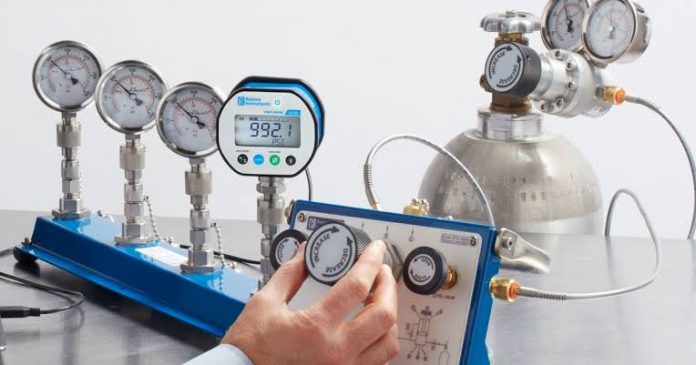Although analogue pressure gauges were invented many years ago, they are essential for many applications. These devices are cheaper compared to digital pressure gauges. Most people prefer digital pressure gauges because they are more accurate. However, due to their design and technology, there is a difference between these two. You have to do their calibration separately as they have differences.
Table of Contents
The anatomy of a pressure gauge
The reason why these gauges have different calibration processes is their internal structure.
Digital gauges
Digital gauges are made using modern technology fitted with piezoresistive sensors. The gauge has few moving parts, and the components are mainly solid to reduce mechanical disruptions. Although they are more accurate, this can be affected by the local temperature. However, high-end gauges have a derating factor for temperatures above a specific temperature range. Therefore, it’s always good for you to perform digital pressure gauge calibration at the temperatures you will use.
Analogue gauges
These gauges come with lots of moving parts. The gauge has a bourdon tube, which is a thin-walled, winding tube that straightens out under pressure. The bourdon tube functions like a long, flattened paper that straightens when a person blows to the mouthpiece. The tube straightens proportionally to the amount of pressure applied. In addition, it drives the gear train that operates the pointer back and forth across the face of the gauge.
Read Also: Following Standard Healthcare Precautions
Tips to help you in the calibration of analogue pressure gauges
As mentioned, an analogue has many more moving parts than a digital gauge. Therefore, it needs more steps to get ready for accurate calibration. Here are steps you can take to get the best results.
- Exercise the gauge:
These gauges are mechanical instruments, so they are susceptible to mechanical effects. However, you can reduce the effects and loosen the gear train by exercising the bourdon tube to its full motion before taking it to a calibration company. Ensure you apply pressure from low scale to full scale repeatedly before calibration.
- Dithering:
It helps tap the gauge to settle the indicator in position. It helps remove transient mechanical tension on the gear train that may make a difference in the position of the needle, just like exercising if you have to perform it for every calibration if you do it once.
- Set cardinal points:
When using analogue gauges, it’s hard to differentiate smaller increments of pressure measurements. For example, if the needle is below the 50 psi mark, it is hard to determine the exact value. To make it easier, you can set the needle on the 50-psi mark and read the digital standard, giving you a precise value of 49.57 psi.
- Address parallax distortion:
When making observations on an analogue gauge, you will mostly see a different value when you view straight rather than by viewing from the side. This commonly happens with high-end gauges, especially those used as calibration standards. For example, a high gauge with +/-1% accuracy would have 100 indication marks. If the parallax isn’t enough to put you off by two marks, the measurement would be wrong, and the parallax error would dominate. These gauges have a pointer squeezed to a fine line at the tip that helps avoid parallax. In addition, some have mirrors on the scale face to help line the mirror image of the needle with the actual needle.
Calibrating digital pressure gauges
As mentioned, digital pressure gauges have fewer mechanical parts and come with a digital display. It means that the things you need to do while calibrating an analogue gauge cannot apply. Unlike analogue gauges, digital ones are electronic and require power from a wall plug, battery, or USB port. If your gauge uses batteries, ensure you check the battery level before you start calibrating.
Most digital gauges have a battery indicator to alert and let you know about their status. So, during digital pressure gauge calibration, checking the battery levels is vital to ensure accuracy.
Why is it Important to calibrate gauges?
Pressure gauges play an essential role in many processes in various industries and labs. These are the most common devices used for pressure measurement purposes. Most industries rely on them, but their simplicity lends them to delayed or forgetting maintenance like calibration. In addition, the industry’s technicians rely on gauge measurement to identify potential or existing problems. So, if the gauge is inaccurate, people’s safety is at stake, and industrial processes may be compromised.
If you don’t calibrate your pressure gauge, it can cause damaged products, process quality issues, and downtime. Also, ensure you hire a calibration company to perform the task as they understand the instrument well. Regular calibration will save lots of money and ensure processes run well.
Conclusion
Pressure gauges are used in various industries globally. As a norm, instruments need proper maintenance for optimal performance, and gauges are not exceptional. So, always ensure you get your calibration done to avoid future problems that can hurt you financially.


















